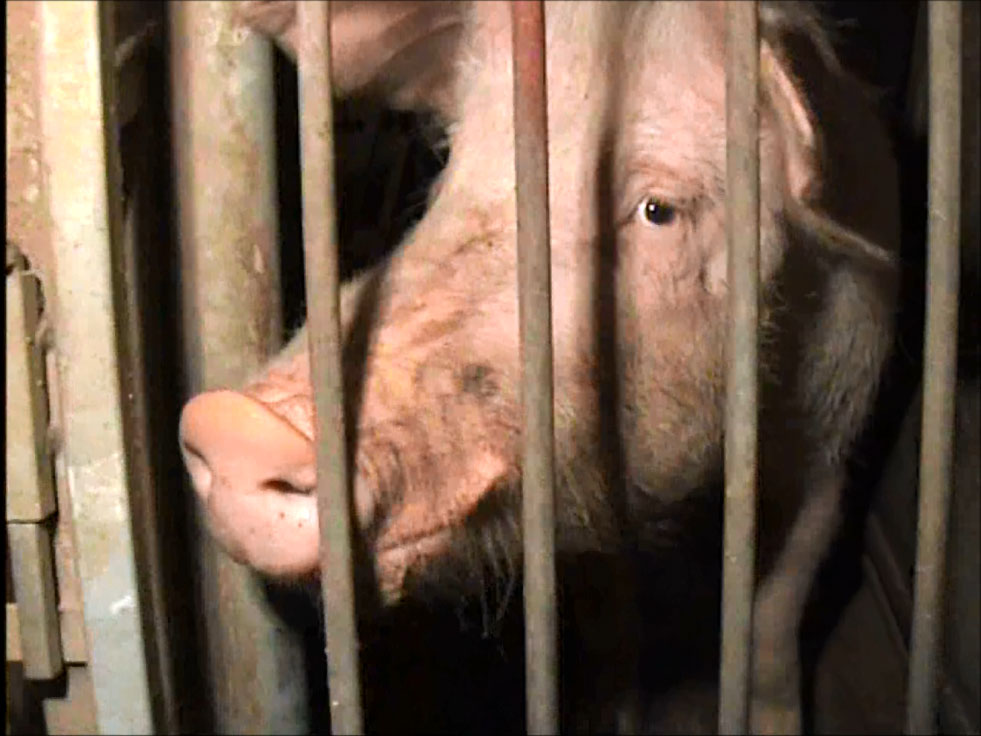
Animal Health Technology students: hidden curriculum lessons in insensitivity
Most students enroll in Animal Health Technology programs because they like animals, and want to be involved in their care. As part of their learning experience, students may train in a variety of settings, including intensive animal production facilities.
Given the harsh and miserable lives farmed animals endure in factory farms, teaching students how to care for these animals should include a particularly high level of compassion. Yet, Canadian animal health technology students are often taught a very different lesson: that farmed animals are only of worth if they are productive, and that it is acceptable to leave wounded or injured farmed animals without pain relief or care.
These teachings are part of the hidden curriculum of animal health technology students whose training involved experience in factory pig barns. Below are actual testimonies from some of these students (names have been removed to protect the identities of the students – many of whom continue to work in the animal health field):
Testimony one:
“ [The barn] was disgusting. Dirty, worms on the walls, air basically unbreathable, and all of the pigs had decubital ulcers.”
Testimony two:
“It was a really dirty facility and the workers didn’t seem to have respect for the pigs. They would castrate the piglets without any anesthetic and then throw the testicles and chopped off tails to their own mother to eat. There were worms (maggots?) in the buildings and outside one of the barn doors there was a mound of dead pigs in the hallway. Who knows how long they were there before actually getting removed. A lot of the pigs looked sick and the building had really poor ventilation.”
Testimony three:
“[The] pig barn is what made me stop eating Pork. The conditions of the facility were absolutely horrible. I remember looking in wheelbarrows and seeing a mound of dead piglets. All of which had bloody noses (from being bashed to death). We went to the newly born piglet pens to practice processing piglets. We would dock their tails, cut off their needle teeth, clamp their ears with a tattoo clamp, inject them with vitamins/antibiotics, and then castrate them. No anesthetic was ever provided and the instruments didn’t get cleaned after each individual pig.
The worst part was allowing an animal health technology class of students, many of whom have never even used scalpels yet, to castrate the piglets without any pain control. Students would be nervous and would be going EXTRA slowly so that they didn’t make any mistakes. This disgusted me and I refused to take part.
After castrating the piglets we went to the sow housing. We then entered a large rectangular room which was simply row upon row of gestation crates. It was horrible. The females could not even turn around. They couldn’t move. One of the barn workers talked to us about A.I.(artificial insemination) and we watched as the workers used push boards to walk a boar down the hallway past all the sows to get them ‘excited’ before their artificial insemination. The part I really didn’t like was how the workers joked that they have to simulate the ‘sex’ process during A.I. by sitting on the female pigs back and moving their legs around to mimic the boar. I found the whole thing so degrading to these poor female pigs.”
While these students may decide to never work on factory farms, the values they are taught – that farmed animals are ‘lesser’ than companion animals, and that their suffering is unimportant- can have deep consequences on the students, from the infliction of psychological trauma to the desensitization to the suffering of others.
It is undeniable that until the last factory farm has closed its doors, farmed animals will continue to suffer, with or without compassionate animal health technicians. Until then though, the very least educators and industry workers could do is show some humanity and take the greatest care to mitigate and alleviate animal suffering, rather than trivialize their abuse and ignore their pain.



